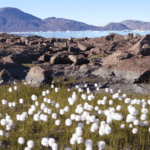Society’s mental image of the typical working scientist—older, white, and male—is not one that naturally leads a person to think of scientists on social media platforms like Twitter and Instagram. These busy hubs of interconnectivity have an altogether younger and more diverse user base. But as anyone who has spent time exploring #ActualLivingScientist and other science-themed hashtags will know social media can be a place where scientists of all ages, fields, and personal backgrounds are actively talking about what they love.
There are also many scientists using images on various platforms to take others inside their labs and show the world what research looks like up close and personal. In theory, social media should be an excellent way of “humanizing” research—and the people who do it—for the general public. But science Twitter and other platforms like it have also been called an echo chamber, meaning that instead of doing effective public outreach, scientists on Twitter are speaking among themselves and “preaching to the choir.” Is this actually the case?
On November 13–15, 2017, we ran a Twitter poll asking people identifying as scientists what their primary reason for using that platform is. We received 182 responses over the course of three days. Surprisingly, only 19% of participants identified public outreach as their main goal. A whopping 61% said they’re on Twitter to interact with other scientists. Sixteen percent were using Twitter just for fun or for non-science-related reasons, while only 3% said that their primary focus was sharing their latest research.
The results of our poll dovetail with results found in the 2016 PLOSBLOGS Reader Survey, a survey of almost 1000 readers of over 20 different science blogs, undertaken with the goal of finding out who engages with science content online. The survey found that the people reading science blogs are primarily those already highly educated in the sciences. Nearly two-thirds of readers were in research, while 28% identified as graduate students (multiple selections were possible, so these could be overlapping groups).
So in both the domains of social media and blogging, it may be reasonable to believe scientists are indeed speaking more to each other than the general public. Is there value to these echo chambers?
I would say so.
First, interactions among scientists occurring in digital spaces are increasing the exchange of knowledge and perspectives. These digital connections are part of an evolving scholarly communication and research ecosystem. Expertise in one domain of science does not imply specialized knowledge of another. The average ecologist does not necessarily know a great deal about developments in space science and vice versa. Creating a space where the two can interact can lead to new interdisciplinary approaches and discoveries.
In one recent case of scientists from different fields interacting, earlier this year an astronomer with a jumping spider infestation in her office discovered their penchant for chasing lasers (especially green ones) and took to Twitter to seek out answers from arachnologists on why this might be.
What developed was a discussion among astronomers and spider scientists on the unusual construction of jumping spider eyes, their likeness to early Galilean telescopes, and finally, the realization that jumping spiders, despite their small size, have the ability to visually resolve the moon in the night sky. Detailed in The Atlantic, it was one of those serendipitous occasions when people who would not normally be talking to one another came together and discovered something new, thanks to the giant virtual meeting space that is Twitter.
Second, innovative developments are taking place in these spaces where scientists can freely interact with one another, developments that are shaping different facets of the scientific process, including peer review.
One instance of this was 2011–2012’s #ArsenicLife controversy, an altogether more serious case of scientific progress happening due to scientists talking on blogs and social media. Felicia Wolfe-Simon and colleagues published research in Science indicating that a particular bacterium was able to substitute arsenic for phosphorus in its DNA—a highly unexpected and novel result.
Massive media hype surrounded the upcoming publication, but once the paper was out, social media-based debates and analysis by fellow microbiologists online exposed questionable experimental methods and doubtful conclusions being drawn by the authors. The controversy resulted in two rebuttals being published, and the work was widely considered debunked. The errors in this case were discovered not through traditional peer review (through which the paper had already passed), but through the sort of informal, crowdsourced peer review that can happen online.
So while social media may or may not be a highly effective means of communicating science to the general public or even the principal reason most scientists use the sites, they have value in connecting scientists to each other for the betterment of their fields. This can include important or novel discoveries like the cases detailed above or something as simple as networking to find your next project or position.
Here are some basics for a few of the most popular platforms if you’re looking at trying something new.
Twitter
There is a wealth of engaging, quirky scientists to follow on Twitter. If you like your discussions in short, snappy tidbits this is the place for you.
Who to follow: Science and Wired (among many others) have compiled helpful lists of compelling science communicators to follow, although these lists are now a few years old and should, at any rate, be viewed as starting points from which to find more of the compelling, but lesser known personalities who are absolutely worth finding and checking out.
What to know: The most active hashtags shift over time, but some good bets are #ScienceTwitter, #ActualLivingScientist, #STEM, and #SciComm. There are also lots of hashtags that help to highlight the work of under-represented groups, such as #LGBTSTEM and #BLACKandSTEM.
Instagram
If peering into others’ labs, experimental set-ups, and field sites is more your thing, Instagram is the visually based platform you’ve been looking for.
Who to follow: Some noteworthy science accounts include Bethany Brookshire’s SciCurious, Paige Jarreau’s SciCommNerd, Samantha Yammine’s Science.Sam, and National Geographic photographer Cory Richards. Wired UK has also recently put out a list of the best science accounts on Twitter and Instagram.
What to know: As for hashtags on Instagram, many are the same ones you’d search for on Twitter. Be sure to check out #ScientistsOfInstagram, #LaboratoryLife, and #phdlife.
Facebook
Facebook remains more of a platform for sharing memes with your friends and seeing your relatives’ vacation photos, but some scientists do have professional pages that they use for professional outreach and sharing science news.
Who to follow: Facebook doesn’t really use hashtags, which makes it harder to find new people to follow, but some scicomm heavy hitters like Neil Degrasse Tyson and Bill Nye have pages, as well as lesser-known scientists like NASA’s Kimberly Ennico Smith, oceanographer Sylvia A. Earle, and astrophysicist Emily L. Rice.
What to know: The advantage of Facebook, for those who embrace it, is that it can be equally a visual medium and a written medium for people who can’t or don’t want to fit their thoughts in 140 (or more recently 280) characters.
LinkedIn
LinkedIn is primarily about connecting for job opportunities and as a place to display your professional bona fides, but it can be a good place to find career development information.
Who to follow: This will depend very much on what your goals are, but universities, companies, or individual researchers you’d like to work for or collaborate with are the obvious choices.
What to know: The ability to share and comment on posts, which is set up much like Facebook, can help you to attract attention from people who might follow you and be interested in working with you.




